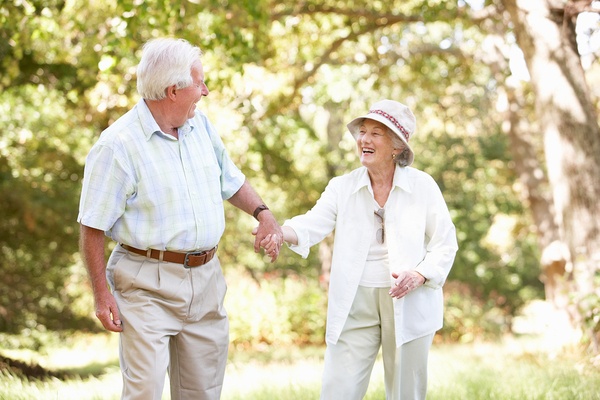 As many as one million people in the United States are living with Parkinson's disease, according to the Parkinson's Disease Foundation. Roughly one third of them will experience "freezing" episodes, which can lead to limited mobility, increased risk of falling, and reduced socialization. Fortunately, there are some ways caregivers can help people with Parkinson's disease manage their freezing episodes. Read on for a closer look at this phenomenon, along with caregiver tips for supporting quality of life while coping with freezing.
As many as one million people in the United States are living with Parkinson's disease, according to the Parkinson's Disease Foundation. Roughly one third of them will experience "freezing" episodes, which can lead to limited mobility, increased risk of falling, and reduced socialization. Fortunately, there are some ways caregivers can help people with Parkinson's disease manage their freezing episodes. Read on for a closer look at this phenomenon, along with caregiver tips for supporting quality of life while coping with freezing.What is Freezing?
The American Parkinson Disease Association defines freezing episodes as "sudden, short, transient blocks of movement that occur primarily with initiating walking, turning, navigating through narrow spaces or approaching obstacles." This temporary immobilization can occur at any time, and last from mere seconds to full minutes.
Although the specific cause of freezing episodes is unknown, both over-medication and under-medication have been linked with freezing. Additionally, freezing can occur more frequently during certain activities, such as when turning around or walking through doorways. When people with Parkinson's are feeling rushed, anxious or excited, they may also be more likely to experience a freezing episode.
Some people are more likely to experience freezing than others. These same people have a much higher risk of falling because of the unpredictability of freezing episodes. Attempts to force the person to move, meanwhile, can also lead to lack of balance and more falls.

Six Tips for Coping with Freezing
While freezing itself is involuntary, several strategies can help people with Parkinson's disease recover during a freeze, including the following six techniques:
1. Reverse direction.
While a person may be unable to move in an intended direction during a freezing episode, switching directions can help them get through it. Can't move forward? Try moving backwards or sideways instead.
2. March in place.
Can't move in any direction at all? Try marching in place. People who are unable to lift their legs during a freezing episode may find that shifting their weight from side to side can help initiate a step.
3. Find a rhythm.
Many people find that it's easier to walk to a rhythmic melody. Singing a song, whistling, listening to music, and even wearing a small metronome are all successful tactics for "restarting" the gait.
4. Aim for something.
Shooting for a specific spot to walk to or over can help inspire movement. Some people carry laser pointers with them to easily create their own visual cues.
5. Count down.
If you've ever waded into cold water and counted down to dunking, you know that giving yourself a "1,2,3, GO!" can be an effective way to prompt movement. The same approach can help during a freeze.
6. Don't fight it.
Fighting the freeze can make it even harder to move forward. Instead, focus on another type of movement, such as moving your arms, until the freeze passes.
Freezing isn't just an inconvenience. It can also be a threat to overall health and wellness -- particularly as Parkinson's disease progresses. Caregivers can use these tips to help promote safety while boosting quality of life for people with Parkinson's. One last thing to keep in mind? Some physical therapists specialize in helping patients with Parkinson's disease. Be sure to ask the neurologist or other member of the healthcare team about physical therapy and other potential treatments for managing freezing.
mmLearn.org offers a large library of online training videos for caregivers of older adults, covering topics pertaining to senior care. Whether you are a healthcare professional or a family caregiver, if you are caring for an older adult we know that you will find mmLearn.org an essential learning and guidance tool for all of your caregiver training needs, including more valuable videos on improving function in Parkinson's patients and coping with a Parkinson's diagnosis.
